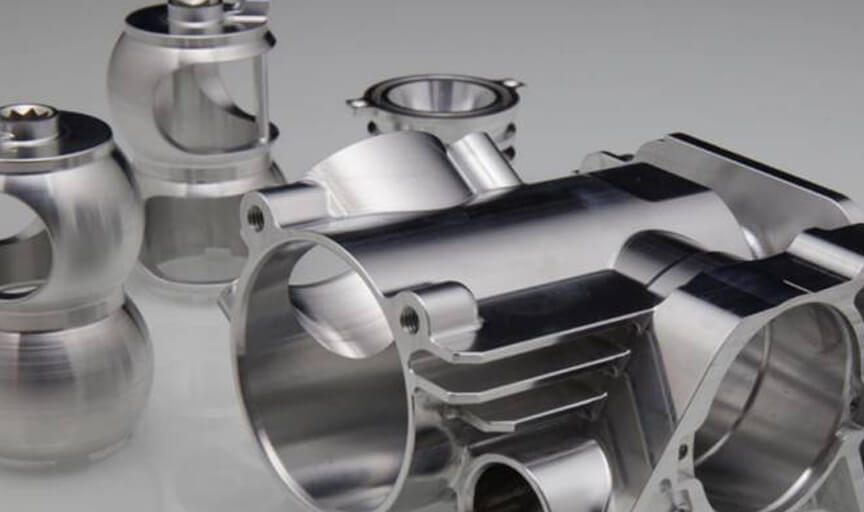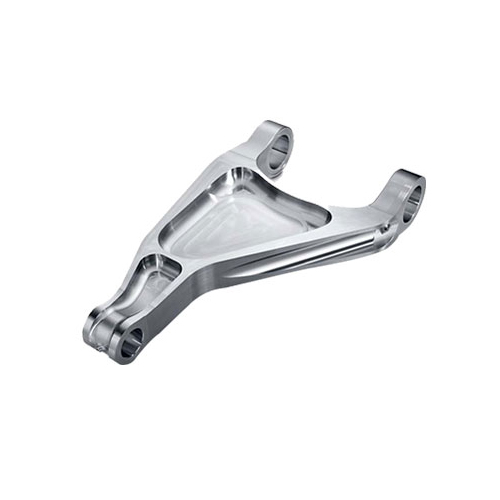This website uses cookies so that we can provide you with the best user experience possible. Cookie information is stored in your browser and performs functions such as recognising you when you return to our website and helping our team to understand which sections of the website you find most interesting and useful.
- Home
- Materials
- CNC Machining Metal
- Aluminum
- Aluminum 2017A
Aluminum 2017A

Material Type
Metal
Material Name
Aluminum 2017A
Alternative Names
3.1325 | 24530 | AlCu4MgSi | A92017
Process Compatibility
CNC Milling, CNC Turning
introduction
CNC Machining Aluminum 2017A

Aluminum 2017A is a high-strength aluminum alloy known for its excellent machinability. This alloy is part of the 2000 series and is widely used in aerospace and other industries.
Its machinability produces small, manageable chips during machining processes. Aluminum 2017A's high strength can be further enhanced through heat treatment methods like solution heat treatment and precipitation hardening. The alloy exhibits good surface finishes during CNC machining. Carbide tools are commonly used for machining Aluminum 2017A, and using coolants is recommended to dissipate heat and extend tool life, particularly in high-speed machining operations.
In aerospace, it is used for producing lightweight yet strong components, while the automotive sector benefits from its strength-to-weight ratio in parts like suspension components. The alloy's superior machinability extends its application to machine parts, fasteners, and screws, enabling intricate designs. Used in the defense industry for high-strength structures, it also contributes to sporting goods, electronic components, and precision parts across various sectors.
Properties
Properties Table of Aluminum 2017A
| MECHANICAL PROPERTIES | |
|---|---|
| Ultimate Tensile Strength | 250-400 MPa |
| Yield Strength | 110-270 MPa |
| Young's Modulus(Elasticity) | 16-19 GPa |
| Elongation at Break | 14-22 % |
| Physical Properties | |
| Corrosion Resistance | Fair |
| Magnetism | Non-magnetic |
| Weldability | Good |
| Thermal Properties | |
| Maximum Service Temperature | 190°C |
| Thermal Expansion Coefficient | 23.6-25.4 x 10^(﹣6)/°C |
| Thermal Conductivity | 134-150W/(m·°C) |
| Electrical Properties | |
| Electrical Resistivity | 5.15 μΩ*cm |
TECHNOLOGY OVERVIEW
Basic Knowledge of Aluminum 2017A
What is Aluminum 2017A?
Aluminum 2017A is a strong alloy of the 2xxx series of aluminum alloys. It is recognized for its high strength, good machinability, and moderate corrosion resistance. It has undergone modifications (indicated by the "A") to enhance its mechanical properties. It is composed mainly of aluminum and copper, with additional alloying elements.
Aluminum 2017A is an alloy that can be treated with heat and has reasonable workability and formability. While it can be welded, doing so lowers its resistance to corrosion, necessitating post-weld heat treatment to regain this resistance.
Advantages of Aluminum 2017A
High strength
Good machinability
Excellent corrosion resistance
Heat Treatable
Good Weldability
Fairly Lightweight
Good Electrical Conductivity
Versatile for machining intricate parts
Applications of Aluminum 2017A
Aircraft fittings, wing spars, aerospace structural parts
Pistons, cylinder heads, automotive structural components
Construction of high-strength structures
Manufacturing machine parts, production of tools
Bolts, screws, fasteners
Boat fittings, hulls, marine equipment
Construction of conductive elements in electrical systems
Bicycle frames, components for sporting equipment
FAQ
Machining Aluminum 2017A Buying FAQ
Other Materials

Aluminum 7075
Aluminum 7075 is a strong and lightweight alloy often chosen because of its high strength-to-weight ratio. It is widely used in CNC machining

Aluminum 6061
Aluminum 6061 (CNC) is the most popular aluminum alloy. It has good strength-to-weight ratio, excellent machinability and natural corrosion resistance.

Aluminum 5083
Aluminum 5083 is a corrosion-resistant, high-strength, non-heat-treatable alloy commonly used in CNC machining.
Get An Accurate Quote For Your Next Projects
No matter your project is complicated or simple, no matter is metal or plastic, you will get an accurate quotation within 6 hours.
Get A Quote Today